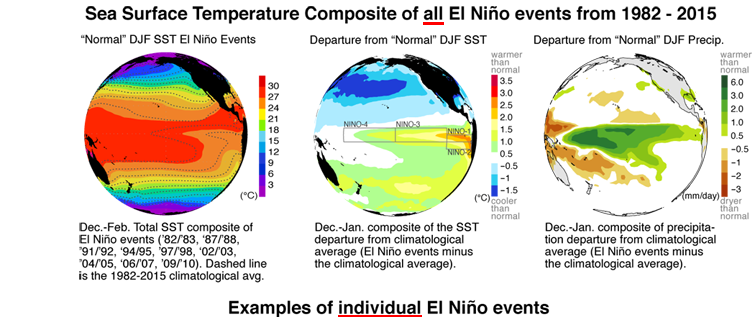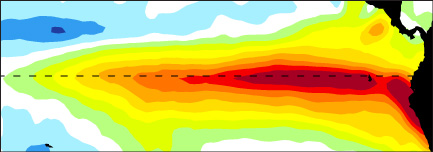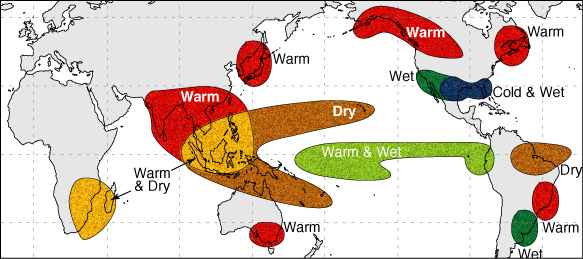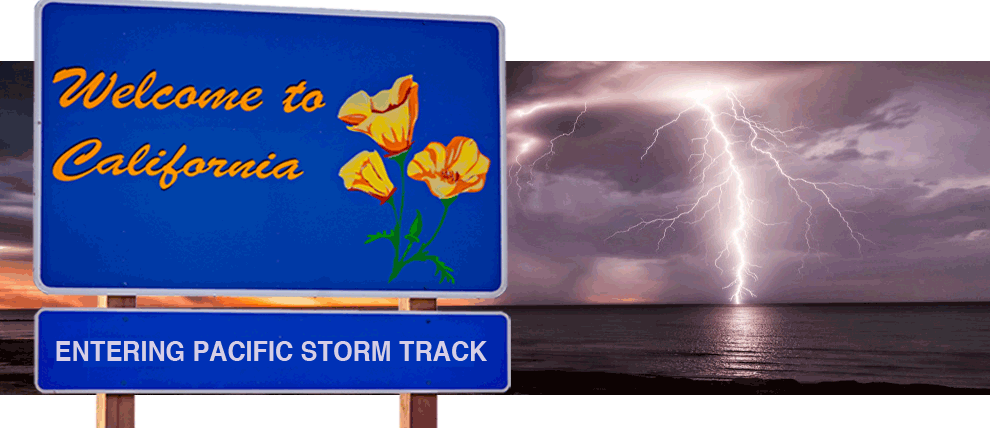

Recall that El Niño occurs in the tropical equatorial Pacific Ocean, and it returns every 3-5 years. Exactly where and how much the sea surface temperatures (SSTs) change during El Niño can vary. Scientists refer to this as variations in location and intensity. The biggest SST increases can occur in the eastern Pacific Ocean and can be very large (see the middle image for the 1997/'98 El Niño). Sometimes these increases occur closer to the central Pacific Ocean, instead (see the middle image for the 1991/'92 El Niño).
You can also see that the magnitude of SST change is different in these two events: the 1997/'98 El Niño is one of the strongest on record. Also note that the magnitude of SST changes for the current 2015/'16 El Niño are about as large as those for 1997/'98. Variations in the location and intensity of SST changes during El Niño affects where and how much precipitation falls along the west coast of North America, as well as many other places (right panels). Go to our Global effects page to learn more about how El Niño affects the atmospheric circulation and leads to drier and wetter winters across the world.




